Every company needs a corporate purpose. In fact, long-term business viability depends on it. Millennials and Generation Z, who together make up nearly half of the full-time workforce in the U.S., want the companies they work for and buy from to have a purpose greater than profit or shareholder value.
A recent survey conducted by McKinsey found that 42% of millennial and Gen Z consumers cited purpose as the primary reason they switched brands. For example, they preferred brands that shared their values and treated employees well.
Generation Z, which includes anyone born between 1997 and 2012, influences your business more each day as the generation enters the workforce and its purchasing power increases. Gen Z is already responsible for $29 billion in purchasing power and more than $333 billion in influence. This generation is quickly gaining steam as a force capable of determining your company’s success or failure.
Shifting Dynamics Make Corporate Purpose a Non-Negotiable
Of all generations, Gen Z is the most racially and ethnically diverse, most well-educated, and the first generation comprised entirely of digital natives. Similar to Millennials, they’re socially progressive and deeply concerned about the threats of human-caused climate change and racial and social injustices. They expect businesses to be good stewards of the earth and back the causes they believe in.
Neither Gen Z nor millennials have blind loyalty to brands or their employers; they grew up during The Great Recession and saw first-hand how this loyalty didn’t pay off for their parents.
Whether you personally align with the perspectives of these generations doesn’t matter. Gen Z and millennials impact business success today and will be our future leaders (and, in some cases, already are). These generations are influential and powerful — and they expect your business to make choices today that will positively impact the future of our world.
As a leader in your organization, it’s up to you to determine whether your company’s legacy and corporate culture will be positively driven by a corporate purpose or negatively driven by a short-sighted focus on profit alone.
Corporate Purpose Example: Salesforce – Salesforce understands its role in our changing world. The company has become a leader in corporate purpose, taking an action-driven stand on sustainability and all forms of equality and representation. In fact, sustainability and equality are two of their core values.
What Is Corporate Purpose?
Corporate purpose guides all activities and decisions within an organization. It stems from the organization’s mission, vision, and values.
- Mission: Why does your company exist?
- Vision: Where is it going?
- Values: What matters to your company now?
Purpose should challenge you to consider how your business connects to the larger ecosystem of our world. The actions your company takes today have consequences for our future. Purpose considers these consequences to position your company not only for business success but also to be a positive contributor to creating a more equitable, sustainable, and thriving society. After all, your business’s future success depends not only on the health and longevity of the community in which you operate — but also on the health of our entire world.
Purpose is “an aspirational reason for being that is grounded in humanity and inspires a call to action.”
Purpose Is Deeper Than Profit
Small to midsize businesses often have a good understanding of why they do what they do. The founder who started the company might still be involved, and their presence and leadership help the purpose remain clear.
But as your business grows, the founder exits, and new leaders join the company, it’s easy to lose sight of the purpose. Too often, the focus turns to profit. But we know very few successful entrepreneurs who set out to start their business with the primary purpose of money. It’s more likely that they set out to meet an unmet need in the market. And if they did that effectively, they made money because of a genuine commitment to the customer.
Corporate Purpose Example: Apple – Apple’s founders, Steve Jobs and Steve Wozniak, started Apple to make computers accessible and easy to use. We can still see that purpose reflected in everything Apple does today. Had they set out simply to make a profit, Apple likely wouldn’t be the revolutionary technology leader it is today.
Customer Need As a Catalyst For Purpose
Thinking of profit as the purpose of your company is not only misguided. It also makes it difficult for your organization to think deeply about what your customers really want and need. If your business doesn’t understand what value it brings to a customer’s life, you can’t expect customers to value what you deliver. Your company has to provide value — and understand the value it provides — to succeed.
For this reason, margin is one of the best indicators of whether your organization operates according to its corporate purpose. Your business purpose isn’t profit, but how well you align your business to your purpose does impact your financial returns.
Understanding your customers’ needs also means understanding what they want from your business as a member of society. As we discussed before, customers increasingly expect companies to take a stance on social issues, use their financial resources for good, and take action to reduce their impact on the environment.
Recent research has shown that “high purpose” companies — those who have a point of view on social issues, innovate with purpose, and have a commitment to society — outperform “low purpose companies.” For example, high purpose companies experience:
- 14.1% greater revenue growth
- 34.7% greater annualized total shareholder return (TSR)
- 7.7% higher operating profitability
Corporate purpose is about doing the right thing for the sake of our world. But it also impacts your business’s performance.
Corporate Purpose Fills a Void, Engages Employees
According to Gallup’s employee engagement report, only 34% of employees were engaged in 2021, and 16% were actively disengaged. Disengaged employees are bad news for your business. They’re less productive, take more “unhealthy” days off of work, and cost your company money.
Low engagement shouldn’t come as a big surprise; businesses are facing record-high quit rates while employees recover from the stress they endured during the COVID-19 pandemic and rethink the role work plays in their lives. Employees want their job to make an impact and be meaningful. “Making a difference” is their currency for success!
These trends have created a void in many organizations for corporate purpose. Research has found that employees whose personal purpose aligns with their organization’s purpose are more engaged, loyal, and likely to recommend your company to others. When embraced throughout your organization, corporate purpose helps your employees see why their work matters, helping them connect their daily work to something greater than themselves.
But without effective leadership, corporate purpose feels abstract and disconnected from an employee’s day-to-day job. Your role as a leader is to communicate the purpose and demonstrate how each employee contributes to fulfilling that purpose. In turn, your employees will be happier and more engaged — and the retention that comes with it will only add to higher engagement.
Corporate Purpose Example: Walt Disney Parks and Resorts are known by many to be “the happiest place on earth.” But how? During training sessions for new employees, Disney focuses first not on technical skills but on communicating the shared purpose — to create happiness.
What Are the Elements of Corporate Purpose?
Unlike some business strategists, CO2 Partners doesn’t create a purpose statement for organizations. Instead, our philosophy is that your organization’s purpose stems from its mission, vision, and values. These core business elements form the foundation of your organization’s purpose. From that purpose, all activities in your organization should flow. Let’s dive into the key elements of corporate purpose.
Values
Your organization’s values describe what matters to your company today. They define your shared belief system. Values guide behavior, especially in ambiguous situations that require tough decisions. When you align your leaders and employees to your values, your organization can achieve more than it ever thought possible.
Defining values is the first step to determining your corporate purpose. At CO2 Partners, we identify operating values — not aspirational values. Operating values are authentic to how people in your organization currently behave.
Your operating values should:
- Express how your organization and its people behave today
- Set clear expectations
- Not be aspirational but instead rooted in day-to-day reality
- Maintain a defined focus that expedites decision making
- Define the lines you will or won’t cross because of what’s most important to your organization
Leaders are often too aspirational when they select values. They choose adjectives that sound nice on paper but don’t exist organically in the organization. They think too much about the kind of values they wish to see in their organization instead of taking a realistic assessment of what values actually show up.
Values Tip: If the founder still leads your company, your organization’s values are most likely an extension of their personal values.
When identifying values, we recommend you first take a step back to observe how people behave in your workplace today. Once you have a list of current behaviors — or operating values — consider which will most effectively guide your people to succeed. Ask yourself:
- Which behaviors create alignment across teams and help in decision making?
- Which behaviors embody the best practices we want to instill across our organization?
- Which behaviors will contribute to a healthier, more productive working environment?
- Which behaviors might lead to dysfunction or inefficiencies?
Narrow the values down by selecting ones your employees are most likely to connect to and feel good about when instilled throughout the organization. Whittle the list down to no more than three values. In our experience, “three” is the magic number; it’s the maximum number of values people can recall and keep top of mind without referring to a piece of paper. Any more tends to be forgotten, making them useless.
Corporate Purpose Example: CO2 Partners – When our founder started CO2 Partners, he included “lifelong learning” as a corporate value. Not only do lifelong learners make the best employees for us, but we also perform better as a business when our clients are lifelong learners. They want to continue bettering themselves, which helps us retain them longer. Your corporate values should also align with your business model.
Vision
Your business’s vision describes (in a measurable and tangible way) what the organization will become in the future. Vision is the destination where your organization is heading. You can see it far off in the distance on the horizon, but you’re not sure if you’ll make it there. The vision gives your organization something to aim for — a sense of where it’s trying to go.
Without vision, your organization and its people are aimless. An analogy we like to share to illustrate lack of vision takes us to a mountainside. Imagine that your friend asks you to go for a hike. You agree to join, but when you get to the mountain, your friend won’t tell you where you’re hiking to. Instead, they simply tell you to keep walking. The hike is long, tiring, and full of obstacles. Without knowing the reward at the end of the hike (the destination), it might be hard to convince you to keep hiking.
Unfortunately, this same thing happens day after day in many organizations. Employees show up to work, unsure where their company is trying to take them. The organization doesn’t know where it’s headed — or at least hasn’t communicated it well. This lack of vision makes it difficult for employees to see why the daily grind of their job is worth it, and they’re more likely to leave the organization for an employer who provides direction, clarity, and meaning.
Many corporate visions also don’t provide a clear way to know if you’ve reached your goal because they lack tangible metrics. Bill Gates’ vision for Microsoft (“A computer on every desk and in every home”) would have been a lot less tangible had he written it as: “Becoming a world leader in the software industry.”
Vision Tip: Limit your vision to a time frame that is five to ten years out, unless you’re a giant company that can set a vision for many years into the future.
Your organization’s vision statement should convey a larger organizational purpose and be:
- Clear, focused, and well-articulated
- Tangible and measurable
- Meaningful and inspire commitment
- Ambitious and include a daunting goal
- Used to set priorities around core competencies
Mission
Your company’s mission describes why it exists as an organization — its reason for being. If vision is the destination you’re trying to reach on your hike, your mission is what got you out of bed that morning, excited to scale the mountain. Your mission is a calling, an innate urge to pursue an activity or perform a service.
You can feel the emotional drive behind these mission statement examples:
- Airbnb: Create a world where anyone can belong anywhere.
- Google: Organize the world’s information and make it universally accessible and useful.
- TED: Spread ideas.
- The Walt Disney Company: To entertain, inform and inspire people around the globe through the power of unparalleled storytelling.
Your business, like every business, has a reason for existing. The challenge is not to lose sight of that reason. Your mission clarifies this reason, differentiates your business from its competition, and keeps your teams focused on making a difference.
The mission can be an effective filter for weeding out distractions that don’t align with your organization’s objectives. When considering a new opportunity, you can ask yourself and your teams: “How does that initiative serve our mission?” Or, “is investing time and resources into that initiative the best way to accomplish our mission?”
A mission statement explains a company’s why, what, and who and should incorporate the following 8 elements:
- Customer focus: Whom do we serve?
- Core competency: What do we do well that helps us meet our stakeholders’ needs?
- Inspiration: Does it make our employees, customers, and partners feel committed and excited?
- Test of time: Will this be relevant years from now?
- Long view: Can we continue to work toward this for years to come?
- What is and is not pursued: Does it provide a decision-making framework that clarifies priorities?
- Authenticity: Is it true to who we are as an organization?
- Legacy: Will we be proud of what people will think of us when we achieve this?
Another framework for developing a mission statement is to ask three questions: 1) What do we do really well as a company? 2) What is it that the world really needs? 3) What is it that can drive our economic engine? In the overlap of those three circles, a mission statement can emerge.
How to Build Corporate Purpose
Building an inspiring and effective corporate purpose means defining your values, vision, and mission and activating them across your organization. A masterful leader identifies ways to better align people and systems to achieve the organization’s purpose. They empower their employees to act consistently with the values, vision, and mission while staying committed to business performance. When leaders inspire and engage their teams, those teams do the same.
Your role as a leader is to become an example of the change you want to see in your teams, the organization, and the greater world. You can do this by prioritizing corporate purpose and helping your employees envision how their individual purpose connects to the organization’s purpose.
-
Define Your Corporate Purpose
There are two approaches to building corporate purpose: top-down vs. collaborative. We like to take a collaborative approach when working with clients because we’ve learned that the best way to create an authentic corporate purpose that employees buy into is to give them a chance to co-create it.
A collaborative process results in much greater engagement and buy-in than a traditional, top-down process where leaders develop a purpose and try to “sell it” to employees. Plus, when leaders come up with the purpose on their own, it tends to lean too heavily toward financial objectives.
Organizational experts Robert E. Quinn and Anjan Thakor shared an experience they had while working with a global oil company that took a top-down approach to define the company’s purpose:
“They [a task force assigned by the CEO] handed us a document representing months of work; it articulated a purpose, a mission, and a set of values. We told them it had no power—their analysis and debate had produced only platitudes.
The members of the task force had used only their heads to invent a higher purpose intended to capture employees’ hearts. But you do not invent a higher purpose; it already exists. You can discover it through empathy—by feeling and understanding the deepest common needs of your workforce. That involves asking provocative questions, listening, and reflecting.”
A collaborative approach to corporate purpose unearths natural, prolific, and compelling themes in the organization. Of course, it’s impossible to involve every employee in creating a corporate purpose. However, the key is to include representation from every functional area and every level of the business hierarchy. Your employees are far more likely to accept the purpose as genuine and be committed to it if diverse voices play a role in shaping it.
-
Communicate the Purpose — Again, Again, and Again
Your work isn’t done after you define your corporate purpose on paper. Overcommunication is essential. In fact, we like to say that you know you’re talking about the company’s purpose enough when your employees start to make fun of you for how often you reference it or model it in your behavior. Soon, weaving the purpose into what you say and do should become second nature. If employees aren’t laughing at you, you haven’t reached the optimal threshold yet.
Connecting employees’ daily work to the organization’s purpose isn’t just the responsibility of executive leadership. Any leader overseeing any team, no matter how small, should consider how they can connect their employees’ work to the company’s values, vision, and mission.
This connection gives your employees’ jobs meaning; they understand how their work impacts the organization’s larger purpose. As we discussed earlier, when employees feel like they’re making an impact, they’re happier, more engaged, and more likely to stay at the company.
-
Reinforce Purpose-Aligned Behavior
Leadership communication is only one part of reinforcing your corporate purpose. There are numerous other ways you can keep the purpose top of mind in your organization, including:
- Using the values as a framework for providing feedback to employees
- Encouraging teams to reference the mission statement each time they make big decisions
- Respectfully challenging ideas when they feel disconnected from the purpose
- If you have employees working on-site, putting the values on the walls, windows, and floors
- If you have employees working remotely, putting the values on digital assets, like the Intranet and presentation templates
- Using symbols and rituals to reinforce what’s most important to the business. For example, give everyone 10 minutes at the start of a meeting to give an example of how they put your organization’s values, vision, or values to work in the last week.
Making it a habit to regularly reinforce the values, vision, and mission helps your employees see that the purpose is important to the organization. Over time, it will start to feel like a regular, foundational aspect of their work experience.
-
Assess if Your Organization Is Living Its Purpose
The final stage to building corporate purpose is to assess how well your organization is living it. One of the best ways to do this is to gather feedback from employees about whether they know the purpose and if it feels true to what they experience in their daily work life.
Another way to measure how well the purpose is infused throughout the organization is to survey a random sampling of customers, leaders, employees, and other stakeholders. Ask them questions, like:
- What is our organization’s mission?
- Where are we headed as an organization?
- What are our values?
If the responses are entirely off base, you know that you have more work to do to either re-define your purpose or embed it more effectively across your organization.
As Ernest Young states: “Purpose isn’t a program that can be launched at a board meeting and left solely to top executives to make a reality. Talk without action becomes ‘purpose puffery.’”
How Will Your Organization Be a Force for Impact?
We like to pull inspiration from a popular motivation model used by educators called ABC+M: A: Autonomy, B: Belonging, C: Competence, and M: Meaning. The philosophy behind this model is that by pulling these four levers, you can help people find their own motivation.
The M in this model, meaning-making, is what companies have missed forever with their employees. Because of this miss — not being clear on the company’s purpose — organizations fail to connect with employees on a deeper level. When things get tough, your organization has nothing to point to and say, “It’s tough right now, but this is where we’re going, and this is why it’s worth going through this with us.”
Purpose gives employees meaning. It helps them see their impact. When employees have meaning, they’re more engaged, motivated, and loyal. When things get tough, they’re resilient because they understand why they’re enduring the hard times. They’ll thrive, and your business will succeed too.
Taking Action:
Are you ready to unearth your corporate purpose, inspire your employees with meaningful work, and set your sights on something more significant than profit? Get in touch with us to discuss how we can help elevate you, your teams, and your company to reach your next peak.



